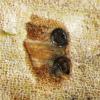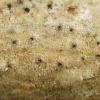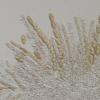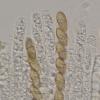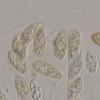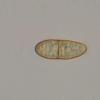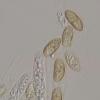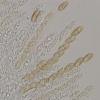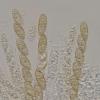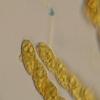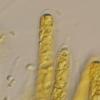
24-12-2025 17:08
Hulda Caroline HolteHello, I have found this propoloid ascomycete on

21-12-2025 09:32
Hello.A tiny ascomycete found embedded in wood in

21-12-2025 21:32
Pol DebaenstHello, Garden, Burgweg 19, Veurne, BelgiumOn 10/1

22-12-2025 23:38
Patrice TANCHAUDBonsoir, récolte sur un mur en pierre, apothéci

22-12-2025 00:47
Patrice TANCHAUDBonsoir, récolte à proximité du milieu dunaire
Amphisphaeria on Sambucus
Gernot Friebes,
07-02-2017 11:04
this was found on the weekend on a corticated branch of Sambucus nigra. I looked through the paper by Wang et al. but to no avail. I'm hoping that someone might recognize this fungus!
The ascomata are immersed, ascospores are smooth, 1-septate, without a sheath, about 15-17 x 6-7 µm, asci are IKI+ and generally shorter than 110 µm (in dead state).
Best wishes,
Gernot
Jacques Fournier,
07-02-2017 11:21

Re : Amphisphaeria on Sambucus
Hi Gernot,
I don't know your fungus but did you notice that ascospores seem to be distoseptate on your last photo?
This might fit A. depressa as described by Wang et al., as most of other characters.
But disospetate ascospores are not typical of Amphispaeria as noted by Wang et al. You should look also into Lepteutypa.
Good luck!
Best,
Jacques
I don't know your fungus but did you notice that ascospores seem to be distoseptate on your last photo?
This might fit A. depressa as described by Wang et al., as most of other characters.
But disospetate ascospores are not typical of Amphispaeria as noted by Wang et al. You should look also into Lepteutypa.
Good luck!
Best,
Jacques
Gernot Friebes,
07-02-2017 13:02
Re : Amphisphaeria on Sambucus
Hi Jacques,
thanks for sharing your valuable opinion on this fungus! With the key in Wang et al. I also arrived at A. depressa and I agree that the dead ascospores seem to be distoseptate although it isn't as obvious in living spores, so I was unsure. That said, the observations by Wang et al. are also based on dead material. The shape of the ascomata seems to fit fairly well too (see below). I also add a few more photos of dead ascospores.
I looked around Lepteutypa but didn't come across a similar species. Í think we might actually be on a good track with A. depressa.
Best wishes,
Gernot
thanks for sharing your valuable opinion on this fungus! With the key in Wang et al. I also arrived at A. depressa and I agree that the dead ascospores seem to be distoseptate although it isn't as obvious in living spores, so I was unsure. That said, the observations by Wang et al. are also based on dead material. The shape of the ascomata seems to fit fairly well too (see below). I also add a few more photos of dead ascospores.
I looked around Lepteutypa but didn't come across a similar species. Í think we might actually be on a good track with A. depressa.
Best wishes,
Gernot
